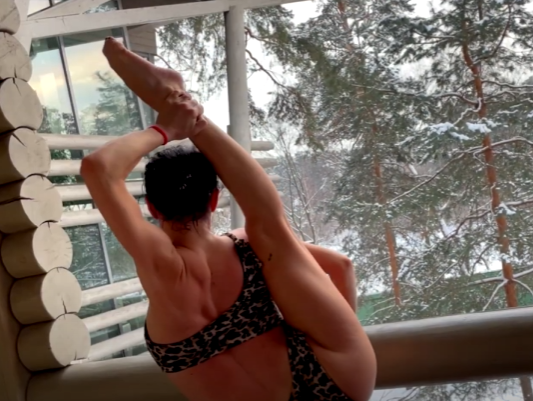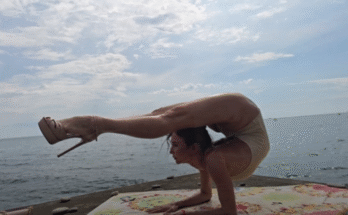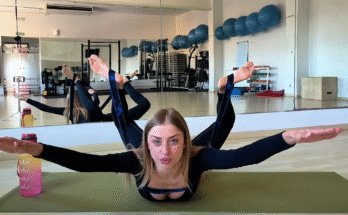
In today’s fast-paced world, finding moments of calm and balance is more important than ever. Between work pressures, family responsibilities, and the constant stimulation of modern life, stress can build up, leading to physical tension, mental fatigue, and overall discomfort. One of the most effective ways to address both body and mind is through stretching—but not just any stretching. When combined with the soothing power of relaxing music, stretching transforms into a holistic experience, enhancing flexibility, releasing tension, and cultivating inner peace.
The Synergy of Stretching and Music
Stretching alone has numerous benefits. It improves muscle elasticity, enhances joint mobility, and helps prevent injuries. Regular stretching increases blood circulation, supports posture, and can alleviate chronic pain, particularly in areas like the lower back, hips, and shoulders. However, when we pair stretching with relaxing music, these benefits are amplified.
Music has a profound impact on the brain and body. Calm, soothing melodies can slow the heart rate, reduce cortisol levels, and stimulate the release of dopamine, promoting feelings of happiness and relaxation. When combined with stretching, music helps guide the rhythm of movements, encouraging slower, more mindful stretches. The result is not just physical flexibility, but also a deeper mental and emotional release.
Preparing Your Space for Relaxation

To fully enjoy the synergy of stretching and relaxing music, it’s essential to create a comfortable environment. Start by choosing a quiet space where you won’t be disturbed. Clear any clutter, and consider using a yoga mat or soft surface for comfort. Dim lighting or natural light from a window can enhance the mood, making the space feel peaceful and inviting. Some people even use scented candles or essential oils to add a sensory layer of relaxation.
Selecting the right music is equally important. Soft piano, ambient sounds, nature-inspired melodies, or gentle instrumental tracks work best. The music should be slow-paced and soothing, without sudden changes in tempo or volume. The goal is to create a consistent auditory backdrop that allows your body to move freely and your mind to relax deeply.
Gentle Warm-Up: Preparing the Body
Before diving into deep stretches, it’s essential to warm up the body. Even light stretching can benefit from a brief warm-up to increase blood flow and prevent injury. Gentle movements such as shoulder rolls, neck rotations, or ankle circles can awaken the joints and muscles. You can also combine these warm-ups with breathing exercises, inhaling deeply through the nose and exhaling slowly through the mouth, synchronizing your breath with the rhythm of the music.
This warm-up phase is also a mental preparation. It encourages mindfulness, helping you focus on the sensations in your body and the calming effects of the music. By the time you transition into deeper stretches, both your body and mind are ready to engage fully.
Stretching for Flexibility

Now comes the heart of the practice: stretching for flexibility. There are various types of stretches to incorporate, each targeting different muscle groups and contributing to overall mobility. For example:
- Forward bends and hamstring stretches: These stretches release tension in the lower back and legs, promoting blood flow and flexibility.
- Hip openers: Poses like lunges, pigeon stretches, or butterfly stretches improve mobility in the hips, which are often tight due to prolonged sitting.
- Spinal stretches: Cat-cow stretches, gentle twists, and backbends increase spinal flexibility and relieve stiffness.
- Shoulder and chest stretches: Stretching the shoulders, chest, and upper back helps counteract slouching and tension accumulated from desk work.
When performing these stretches, allow the music to guide your movements. Let your body respond naturally to the rhythm, moving slowly into each position and holding it long enough to feel a deep release. Avoid forcing any stretch; instead, focus on gentle elongation and mindful awareness.
Breathing and Mindfulness
A crucial aspect of stretching with relaxing music is synchronized breathing. Deep, slow breaths enhance the oxygen flow to muscles, promote relaxation, and help maintain focus. Inhale as you lengthen a muscle, exhale as you sink deeper into a stretch. This simple practice creates a feedback loop: the body relaxes, the mind calms, and the stretch becomes more effective.
Mindfulness is equally important. As you stretch, focus on the sensations in your body—the warmth in your muscles, the feeling of tension releasing, the expansion of joints. Notice the interplay between the music and your movements. Allow thoughts to drift away and bring your attention fully to the present moment. This combination of movement, music, and awareness creates a meditative quality, turning your stretching session into a complete mind-body experience.
Relaxation and Cool-Down
After completing the stretching routine, it’s essential to allow time for relaxation and cool-down. Lie down in a comfortable position, close your eyes, and let the music carry you into a state of calm. Focus on the breath, feeling the body integrate the benefits of the stretches. This period of stillness helps reduce muscle soreness, promotes recovery, and leaves you with a sense of rejuvenation.
During this cool-down phase, you may notice subtle improvements in flexibility and mobility. Your muscles feel looser, your posture feels lighter, and there is often a profound sense of mental clarity. This is the magic of combining stretching with relaxing music: the body becomes more flexible, the mind becomes calmer, and both feel refreshed and renewed.
Benefits Beyond the Physical

While flexibility and relaxation are the most immediate benefits, this practice offers a range of additional advantages. Regular sessions can improve sleep quality, reduce stress, enhance concentration, and even boost mood. The meditative aspect of synchronizing movement with music fosters emotional balance, helping you navigate daily challenges with a calmer, more centered mindset.
Moreover, this practice is accessible to people of all ages and fitness levels. Whether you are an athlete seeking to enhance performance or someone looking for a gentle way to unwind, stretching with relaxing music can be adapted to meet your needs. It encourages self-care and promotes a positive relationship with your body, cultivating awareness, gratitude, and mindfulness.
Incorporating Stretching into Daily Life
To reap the full benefits, consider making stretching with relaxing music a regular part of your routine. Even short, 10-15 minute sessions can make a noticeable difference over time. Early mornings, lunch breaks, or evenings before bed are ideal times to practice. The consistency of gentle stretching combined with music not only enhances flexibility but also reinforces mental calmness and emotional resilience.
Technology can support your practice. Music streaming platforms offer curated playlists specifically designed for relaxation and stretching. Using headphones or high-quality speakers can improve the auditory experience, making it easier to immerse yourself fully in the session.
Conclusion: A Holistic Experience

Stretching against the background of relaxing music is more than an exercise routine—it is a holistic experience that nurtures both body and mind. It enhances flexibility, promotes muscle recovery, reduces stress, and cultivates mindfulness. By integrating gentle movement, controlled breathing, and soothing melodies, you create a space where physical well-being and mental serenity coexist.
Whether you are seeking a moment of peace after a hectic day, looking to improve mobility, or simply wishing to reconnect with your body, this practice offers a pathway to calm and rejuvenation. The combination of flexibility and relaxation, guided by the gentle rhythms of music, is transformative. It reminds us that self-care is not just an indulgence—it is a necessity, a beautiful journey of listening to the body, honoring its needs, and experiencing the joy of movement in harmony with sound.
So, the next time you wish to unwind, stretch, or simply feel better in your body, press play on some relaxing music, step onto your mat, and allow yourself to move, breathe, and relax. You might be surprised at how transformative a few minutes of mindful stretching can be. Your body will thank you, your mind will thank you, and your spirit will feel lighter, freer, and more balanced than ever.



